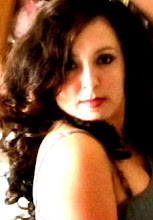Norouz, means new day, which is the Spring Equinox and time for revival and renewal of life; people purchase large bouquets of flowers, especially gladiolas, carnations, daffodils, and almond blossoms. The customs are abundant and follow the mandatory spring cleaning. Many rugs are shaken out, pots of flowers and new trees are planted, and windows are crystal clear and clean.
A few days before the festival, a huge feast of sea foods, dill rice, kuku sabzi (green omellettes), Ash e Reshteh (thick noodle and beans soup) is prepared along with Shiraz Salad and other side dishes. Trays of cookies are baked. Delicate pastries and delectable cookies, dainty crystal goblets of seven heavenly and symbolic trinkets, gold fish swimming rapidly back and forth in a glass bowl, sprouted wheat tied up by red ribbon, and a dose of fortune telling from Hafiz' lovely collection of poems, are just a few of festivities at sight.
Sound of music and hugs and kisses along with gifts of cash notes and silver or gold coins are given out for good cheers and prosperity. Samanu, a thick and extraordinary sweet dessert is served in just a few small spoonfuls for sweetness.
This is a festival that has inspired many marvelous poems and works of art. Since this memorable festival still marks the new year in Iran, people prepare for several fireworks masquerades, masked balls, new year haft seen spread of seven symbolic trinkets, Samanu, Sonbol (hyacinth), Sabzeh (green wheat sprouts), Seeb (red apple), Seer (garlic), Sekeh (coins), and Serkeh (vinegar); these items begin with s, the spread is called Haft Seen (seven s)...
It's very customary that children receive gifts of new clothes, shoes, and money to buy themselves whatever they'd like. There are many story books, legendary tales, and fairy tales are created with Norouz in their backdrop.
An imaginary old bearded and very kind man who visits once a year, comes to each house secretly on Norouz and leaves coins and goodies. His name is Amoo Norouz (uncle Norouz).
He wears green and red festively decorated clothes and long pointy hat. He's the Persian Papa Noel or Santa Clause.
The traditions around Norouz are adorned with musical tunes, plenty of guest visits, and a large picnic on the 13th day of new year which marks the last day of the festivities.
On Sizdah Bedar (13th day picnic outdoors) is the largest day of outdoor picnic. In ancient Zoroastrian tradition, 13 is considered bad luck. By going outdoors to enjoy spring sunshine and fresh air, families welcome a refreshing day and a break from routine. Sizdah bedar is a sweet fair well to Norouz and a final note to the holidays. On the 14th, kids return to school and life begins as usual.
When many citizens are seen outside their homes, having lunch on green grass under shady trees, grilling kebobs (skewered meats), carrying large baskets of spring fruits especially Chaghaleh badoom) crunchy green almonds, Faloudeh (Persian ice cream), and very good sandwiches, one can not feel but nostalgic and hopeful.
